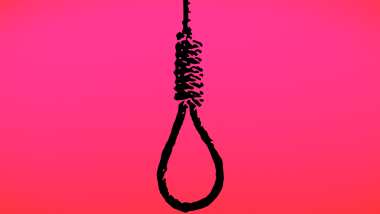Suicide has reached epidemic proportions today. Dismal mental health parameters and poor awareness about have resulted in the present situation. According to the World Health Organization, 80,000 people kill themselves every year and even more people attempt suicide. Suicide kills one person every 40 seconds and is among the three leading causes of death in the world. Depression is said to be the precipitating factor for suicide. But not all those who have mental health problems commit suicide. The risk is highest among certain groups of people. On National Suicide Prevention Week 2019, let us discuss the 10 types of people who are most likely to commit suicide.
Risk and protective factors of suicide can differ and change over time. Sometimes, types of suicidal behaviours can also vary across these groups. While some groups are at a higher risk of suicide, others may be more vulnerable to suicide attempts. Here is a list of groups at high risk of suicide.
1. Men
Although suicide attempts are higher in women, men are most likely than women to go through with the attempt.
2. People With Depression
Depression is a precipitating factor for suicides. Not all those who have depression may commit suicide, but the risk is more in those with depression. The severity of the mental health problem is directly proportional to the suicide risk.
3. People Who Abuse Drugs, Alcohol
There’s a close link between substance abuse and suicide. People who abuse alcohol or drugs or both are six times more vulnerable to suicide than those who do not. Male addicts are two to three times more at risk than those who are not addicts. Female addicts are 6.5 to 9 times more vulnerable to suicide than non-addict women.
4. People With a Family History of Depression and Suicides
People who have a family history of mental health problems and suicides are at higher risk than those who don’t. Suicidal behaviour is known to run in families. Studies have shown that people who had a parent or sibling who committed suicide were two and a half times more likely to follow in their footsteps. How to Help Someone with Depression and Suicidal Thoughts.
5. People Who Own Firearms
People who have access to guns and firearms are more likely to kill themselves than those who don’t. Also, guns make it difficult for people to survive a suicide attempt due to their lethality. Around 85 percent of suicides attempted by guns end in death! 6 Warning Signs of Suicide in Teens That Should Never Go Unnoticed.
6. People in Jail
Prisoner suicide refers to inmates ending their lives inside the prison. The risk of suicide is higher in prisoners due to the incidence of mental health problems in criminals, social isolation, prison stressors, threats from other inmates, loss of hope and a lack of screening facilities in prison for suicidal behaviour. From Breakup to Medicines, 7 Causes of Suicide You Didn't Know About.
7. People Exposed to Suicides
Copycat suicides are quite common. When someone is exposed to the suicide of a family member, a close friend or a spouse, it triggers a ripple effect. It’s also called a suicide contagion or a cluster suicide. People exposed to suicide are a high-risk group. 13 Subtle Signs of Suicidal Behaviour According to a Psychiatrist That We Miss Out On.
8. People With Chronic Illness
People suffering from a chronic or terminal illness are also at high risk. Suicide risk and depression in people with a chronic illness is quite high. The risk is even more for those who have no support from family, low quality of life, low economic status and poor mental health. Himanshu Roy Suicide Case: What We Need To Understand about Cancer Patients and Suicides.
9. Teenagers and Young Adults
Suicide is among the third-leading cause of deaths among teens and young adults, according to the Centers for Disease Control and Prevention. The age group between 15 and 24 are a high-risk group for suicides.
10. Senior Citizens Over 60 Years
Senior citizens over the age of 60 are vulnerable to suicide and this risk increases with age. The loneliness, stress, chronic illnesses, impaired decision-making skills and social disconnectedness make the elderly a high-risk group. Men are more at risk than women.
But not all those who belong to these demographics kill themselves. The vulnerable should have access to professional help and emotional support. If these two needs are met, the instances of suicide among these high-risk groups can also come down drastically.
(The above story first appeared on LatestLY on Sep 11, 2019 08:17 PM IST. For more news and updates on politics, world, sports, entertainment and lifestyle, log on to our website latestly.com).













 Quickly
Quickly



















